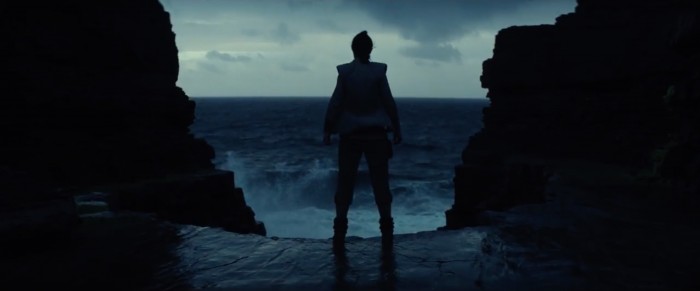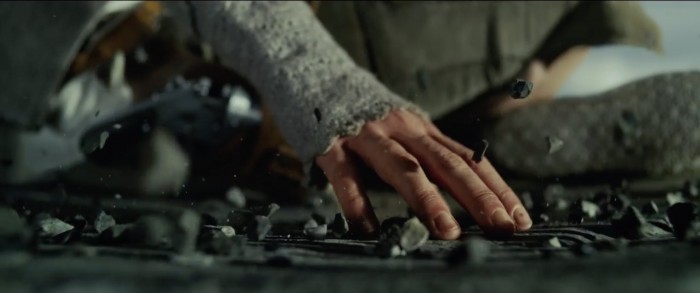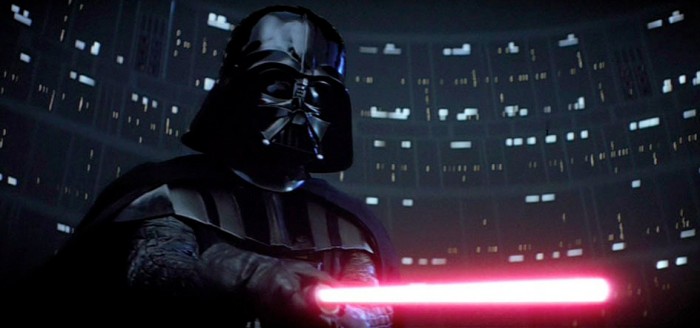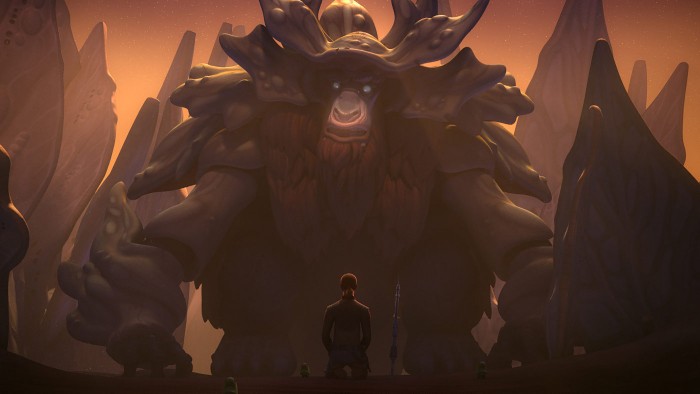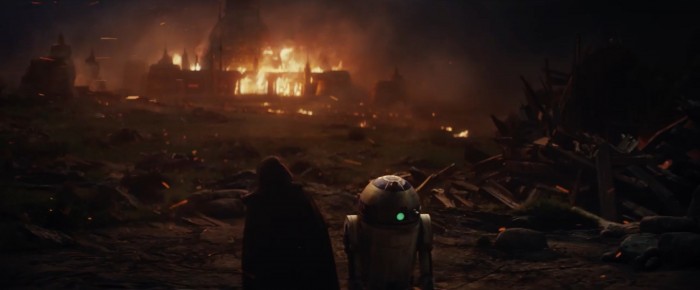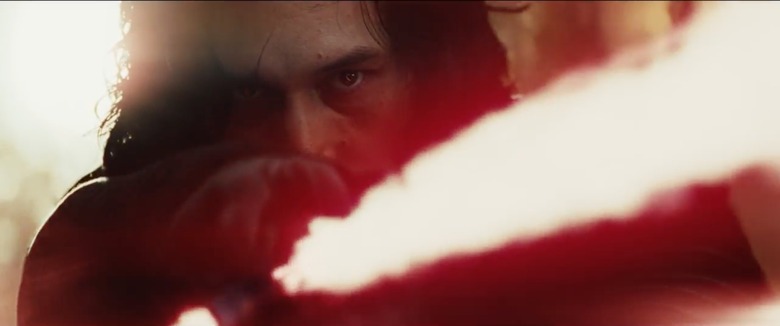How The Jedi Ending Could Bring Balance To The Force: A 'Star Wars' Investigation
"It's time for the Jedi to end."
Those seven words, some of the first we've heard from the mouth of Luke Skywalker in the Sequel Trilogy era, set the internet ablaze last month when the trailer for Star Wars: The Last Jedi debuted at Star Wars Celebration Orlando. Whether you're a die-hard fan who takes in every bit of Star Wars you can find or a casual fan of the movies, those words had a heavy sensation to them: what in the galaxy could Luke mean?
Of course, with that question comes worry and speculation. If the Jedi end, what does that mean for the galaxy? What does it mean for the Force? What does it mean for our heroes like Rey, who ostensibly wants to train as a Jedi? We've been taught by decades of Star Wars storytelling that without the Jedi there can be no balance to the Force. It's literally in the opening dialogue of Star Wars: The Force Awakens, courtesy of Max von Sydow's Lor San Tekka.
But let's face it: The Last Jedi, or even the "end" of the Jedi, won't be the end of Star Wars. With games, TV series, movies, books, and comics all in development for after the film's release, it's obviously not the end of the franchise, or even of the story of the Skywalker family and the Jedi as a whole. So what does it mean? Well, some of those other canon projects may be gearing us up for a new understanding of the Force, and a new type of Force user altogether.
Balance to the Force
The most important thing to look at first is the concept of balance in the Star Wars universe. This is the central theme to virtually all stories in the franchise, but it's also the most malleable. After all, what does the idea of "bringing balance to the Force" really mean? Does that mean there should be an equal number of light and dark side users of the Force? Does it mean that because darkness is inherently "easier" (all you need is a little fear, hatred, anger, or even, perplexingly according to the Jedi – any kind of feelings, pretty much, to fall to it), that the Jedi need to reign supreme in order to balance all that negativity out?
What is the Force?
Dave Filoni, showrunner of Star Wars Rebels and Star Wars: The Clone Wars before it, has said that everything you need to know about the Force you can derive from the earliest mentions of it, in the original Star Wars trilogy. It is created by – and binds – all living things. The Jedi don't manipulate the Force so much as they guide it, and it guides them. The "energy field" as Obi-Wan originally described it, brings to mind a fluid nature, and that's appropriate. Remember, all we learned about the Force in the first Star Wars movie was Obi-Wan's dialogue about it, and that dead people could talk to you through it. Oh, and it made you shoot better; that's about it! There was no moving massive objects with your mind, shooting electricity from your fingertips, or anything like that at first. All of that is an extension of the original definition, though.
Once we understand the very basics of the Force we can talk about the dark side, and the light. The dark side is used for power, to get something you want. The light side is for protection and helping others. That's a simplification, but it still makes the point.
The Prophecy of the Chosen One
One of the most important additions to Star Wars lore in the last two decades came out of the prequels. There, we learned that several Jedi, especially Qui-Gon Jinn, believe Anakin Skywalker is the Chosen One, a prophecized Force wielder who would bring balance to the Force. While Obi-Wan Kenobi said the Chosen One is meant "to destroy the Sith and bring balance to the Force," Yoda warned it might have been misread. This is one of the most speculated-on lines in Star Wars history, because it seems to indicate that the balance in the prophecy could be misunderstood. At this point in the timeline, there were only two(ish) Sith running around, and a few hundred Jedi. If that sounds unbalanced to you, it's because it is, if you're looking at sheer numbers. Thus, by turning on the Jedi, "from a certain point of view," Anakin did bring balance. Of course, decades later he would turn on his master, and on the ways of the Sith, thus arguably fulfilling the original reading of the prophecy... just well after anyone expected.
A New Balance
Of course the very concept of balance... the "grey" if you will (though that word is loaded), was explored extensively in the Legends universe. In recent years, it's been seeping steadily into canon, as well. That started with The Clone Wars, where we met the "Force gods" of Mortis. These living representations of the light and dark sides of the Force were joined by their "Father," who represented the middle, and could harness both sides equally. This was the first canon living representation of the balance.
Then, on Star Wars Rebels this past season, we met the Bendu, who self-describes as "the one in the middle" with reference to the light and dark, which he calls the Ashla and the Bogan. He winds up teaching Kanan Jarrus about the middle ground; while Kanan is still firmly a Jedi knight, he does gain new abilities (like his Force-sight) from his training with Bendu, and seems much more at peace after the time spent with the one in the middle.
Likewise, Kanan's own apprentice, Ezra, dabbled with the dark side, but without truly going dark. He also, with Maul, joined together two repositories of information, Holocrons, a Sith one and a Jedi one, that allowed him to look into the cosmic Force itself. It was only through the meeting of the dark and the light that he could find the knowledge he sought, again indicated how important balance is.
Were the Jedi Wrong?
This all comes down to the question, then, of whether the Jedi were fundamentally wrong in their ways of understanding the Force, balance, and the chosen one, and many things seem to indicate that. One of the first novels published the new canon, Tarkin, revealed that the Jedi may have indeed been corrupted from within. The Jedi Temple on Coruscant was constructed over the remains of a Sith shrine, and the indication is that the Jedi were clouded by the dark side's power there over the course of hundreds or thousands of years (incidentally, that same temple would become the Imperial Palace, the seat upon which the Emperor ruled the galaxy, again showing its importance to Force users, and striking a remarkable balance). If they were being corrupted, that could extend to all things, including prophecy. It could also be why there were so ironically fearful of all emotion, including love and what that attachment could bring to people (namely, a door to the dark side).
Rise of the Jedi
This is where we get into some speculation and less fact. We don't know much at all about Luke Skywalker's time spent between Return of the Jedi and The Force Awakens. We know that the Church of the Force (back to Lar San Tekka!), including the Guardians of the Whills and others, kept much of the Jedi teachings and information alive through oral history and in secret – but also that it would make those teachings even easier to be distorted. We know from the comic Shattered Empire that Luke was actively seeking other Jedi sites and Force artifacts to try to better learn his craft; as the sole living Jedi, he had no one that could teach him directly (though at least a couple of non-Jedi Force wielders, including Maz Kanata, were running around the galaxy at the time). We know that he took other Force wielders under his wing as Jedi-in-training, including Ben Solo. We know that Ben Solo was turned to the dark side by Supreme Leader Snoke, but thanks to the Visual Dictionary of the Force Awakens, we know that very interesting reason for that recruitment.
"The Supreme Leader believes Ren to be the ideal embodiment of the Force, a focal point of both light and dark side ability," Pablo Hidalgo of the Lucasfilm story group wrote in the book.
This very well could be the most important single sentence in all of the non-film canon material thus far, as it indicates that Snoke and Kylo Ren have no intention of bringing back the Sith, and that Snoke wants Ben Solo/Kylo Ren because he embody both sides of the Force.
So, in saying "It's time for the Jedi to end," what if Luke has simply come to a conclusion similar to that of Snoke? The idea being, in order for there to be balance in the Force, truly, since it comes from, flows through, and binds all living things, they must have balance within themselves? If we follow this assumption, then Luke could simply mean that the teachings of the Jedi as they were need to end, and the Jedi need to be reborn in a new, more balanced fashion. That's speculation, but with the introduction of the Church of the Force, the Guardians of the Whills, the Mortis gods, the Bendu, non-Jedi/Sith Force users like Ahsoka and Maz, and the merging of the Holocrons, it's very clear that Star Wars is emphasizing balance more than ever before.
So is Luke's line basically, "The Jedi are dead, long live the Jedi," with a new understanding of what it is to be one? We'll find out this December when Star Wars: The Last Jedi hits theaters.

